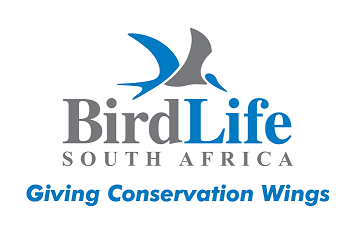Black Harrier (Circus maurus)
CAR summary data
Habitat and noted behaviour
Sightings per Kilometre
Please note: The below charts indicate the sightings of individuals along routes where the species has occured, and NOT across all routes surveyed through the CAR project.
Regional Status

Global Status


IUCN Data (Global)
IUCN 2024. IUCN Red List of Threatened Species. Version 2024-1 (www)Assessment year: 2021
Assessment Citation
BirdLife International 2021. Circus maurus. The IUCN Red List of Threatened Species 2021: e.T22695379A173521089. Accessed on 09 December 2025.Geographic range:
Circus maurus is restricted to southern Africa, where it is concentrated in the Western Cape (its core range), and occurs in the Eastern Cape, the Northern Cape and Free State (where it is irruptive in both areas), in South Africa (R.E. Simmons in litt. 2004), and is also found in Lesotho (non-breeding birds) (R.E. Simmons, O. Curtis and A. Jenkins in litt. 2004), with a tiny isolated population in northern Namibia (less than 50 birds including about five pairs [Simmons 2015]). It is considered a vagrant in Botswana and Eswatini, where non-breeding birds occasionally occur (Hancock 2008). An unknown proportion migrates between South Africa and Namibia (Simmons 2005).Habitats:
It is a species of cool, dry-country, frequenting coastal and montane fynbos (Curtis et al. 2004, R.E. Simmons, O. Curtis and A. Jenkins in litt. 2004), highland grasslands, Karoo subdesert scrub, open plains with low shrubs and croplands. It often breeds close to coastal and upland marshes with tall shrubs or reeds, occurring in dry steppe and grassland areas further north in the non-breeding season (Brown et al. 1982, Thiollay 1994, R.E. Simmons, O. Curtis and A. Jenkins in litt. 2004). In the Western Cape of South Africa it is most abundant in coastal and montane fynbos (Curtis et al. 2004), whilst in Namibia it favours coastal river floodplains (S. Braine and J. Paterson per Simmons 2005). It prefers open ground with low vegetation for hunting, where it feeds on a diet comprising mainly of small mammals, especially Otomys and Rhabdomys species (R.E. Simmons, O. Curtis and A. Jenkins in litt. 2004). Whilst mammals make up the vast majority of prey taken at coastal sites (and this remains consistent throughout the breeding season [García-Heras et al. 2017]), birds make up a slightly greater proportion than mammals in the diet of pairs nesting in montane habitats (Curtis et al. 2004), although individuals breeding at inland sites start the breeding season with a similar diet to those at coastal sites and as the season progresses their diet shifts to fewer mammals and more birds and reptiles (García-Heras et al. 2017). Local fluctuations in breeding numbers may be related to population cycles in its prey base, such as mice whose numbers fluctuate with rainfall, especially in the more arid regions (Thiollay 1994, R.E. Simmons in litt. 2007, see also García-Heras et al. 2016, 2017). Damp sites, near vleis, marshes or streams, are preferred for breeding (Brown et al. 1982), while south-facing slopes are preferred in montane areas (R.E. Simmons in litt. 2007). Nests are built on the ground and usually hold three to five eggs (Brown et al. 1982, Curtis et al. 2004, R.E. Simmons, O. Curtis and A. Jenkins in litt. 2004). In south-western South Africa, egg-laying takes place in June-November, with peaks in July and September (Curtis et al. 2004). After breeding, females appear to migrate to higher elevations, while the males stay closer to the breeding grounds (Anderson 2013). There appears to be a lack of genetic variation within the species, which while uncommon, is not unique (Fuchs et al. 2014).Population:
The total population is estimated at <1,000 individuals in South Africa, Lesotho and Eswatini (Taylor 2015) with only c.10 mature individuals outside this region (Taylor 2015; <50 individuals of all ages in Namibia [Simmons 2015]). This would equate to approximately 670 mature individuals, placed here in the range 251-999 mature individuals. Based on its distribution, it is thought to form 2 subpopulations, with the largest subpopulation holding the majority of individuals.Threats:
The species has conceivably lost 50% of its preferred breeding habitat over the last century (Curtis et al. 2004), and present rates of loss in the Overberg may be over 1% per annum (R.E. Simmons in litt. 2007). Habitat is primarily lost to agriculture, and this is compounded by the uncontrolled burning of fynbos and grassland, which renders these habitats unsuitable for breeding for about five years (R.E. Simmons, O. Curtis and A. Jenkins in litt. 2004). Alien vegetation and urbanisation are also cited as causes of habitat loss (Curtis et al. 2004). In south-western South Africa, it is thought that breeding birds have been displaced from prime lowland habitats (renosterveld and fynbos) by the spread of cereal agriculture, with breeding pairs presently occupying only coastal areas, with high productivity, and montane habitats, where breeding success is low and levels of nest predation are high (Curtis et al. 2004). It is particularly vulnerable to nest predation because it nests on the ground (see Lee and Simmons 2014). Rodent populations in areas of wheat cultivation may be as low as 33% of those found in renosterveld vegetation (R.E. Simmons in litt. 2004), and remnant patches of renosterveld, which continue to be degraded (R.E. Simmons, O. Curtis and A. Jenkins in litt. 2004), hold lower numbers of rodents than coastal strandveld vegetation (R.E. Simmons in litt. 2004).Low hatching rates, possibly as a result of high pesticide residues, is an increasing threat now that many remaining breeding habitats are surrounded by agricultural areas (R.E. Simmons, O. Curtis and A. Jenkins in litt. 2004). The ingestion of herbicides and pesticides may account for the death of some adults in South Africa (Simmons 2005). Persistent organocholorines, which were found in blood samples from South African birds, may cause physical stress and reduced immunity at higher blood concentrations (Garcia-Heras et al. 2017b). Road deaths adjacent to west coast breeding grounds also numbered six birds over one breeding season in 2007 (R.E. Simmons in litt. 2007). Drainage, impoundment and inappropriate management of vleis, marshes or streams near breeding grounds could prove detrimental. Climate change in South Africa is predicted to cause a decrease in overall winter rainfall in the core breeding areas, which is likely to lead to a reduction in mouse populations and disruption to breeding (R.E. Simmons in litt. 2007). The same threats may apply to the species in Namibia, and the favoured habitats of the migrant population may be overgrazed, particularly in southern Namibia (Simmons 2005).
Overgrazing in southern Namibia is attributed mainly to resident pastoralists and 'emergency grazing' by farmers from elsewhere, which is offered during years of good rainfall (R.E. Simmons in litt. 2007). Assessments carried out between 2016-2019 found wind farms to be a major threat to Black Harriers, with a mortality rate of 1.5 birds per year at some farms (R.E Simmons, 2019, pers. comm.,). Initial results from a PVA underway by Cervantes et al., (in prep) suggest that if an average of three birds were killed per year by wind farms in South Africa the population would collapse in about 100 years, while if five birds were killed per year by wind farms in South Africa the population would collapse in less than 75 years.
Conservation measures:
Conservation Actions UnderwayCITES Appendix II. CMS Appendix II. There are fewer than 100 individuals in protected areas (Siegfried 1992). The resident Namibian population occurs within the Skeleton Coast Park and is protected from fires and grazing (Simmons 2005). The breeding ecology and threats for this species are being studied, in particular the effects of habitat fragmentation (Taylor 2015). An ongoing monitoring programme has been underway since 2000, led by R. E. Simmons at the University of Cape Town. A Species Action Plan is underway, facilitated by BirdLife South Africa and Endangered Wildlife Trust of South Africa, and a population viability analysis is being undertaken, led by R.E. Simmons and Dr Francisco Cervantes Peralta (R.E.Simmons, 2019, pers.comm., 20 December).Conservation Actions Proposed
Investigate the possible occurrence of breeding in the northern Namibian population (likely in October-November) (Simmons 2005). Study the causes of population fluctuations (R.E. Simmons, O. Curtis and A. Jenkins in litt. 2004). Carry out research into its foraging ecology and the availability of rodent prey around habitat fragments (R.E. Simmons, O. Curtis and A. Jenkins in litt. 2004). Provide incentives to landowners to manage fynbos, renosterveld and grasslands beneficially (R.E. Simmons, O. Curtis and A. Jenkins in litt. 2004). Instigate education programmes to raise awareness of the value of this species. Study direct interactions and potential competition between the species and African Marsh Harrier C. ranivorus where they occur in sympatry (Curtis et al. 2004). Promote the species as an icon of Cape conservation needs (R.E. Simmons, O. Curtis and A. Jenkins in litt. 2004). Research the importance of conservation actions in Lesotho (Taylor 2015).
 Login
Login


